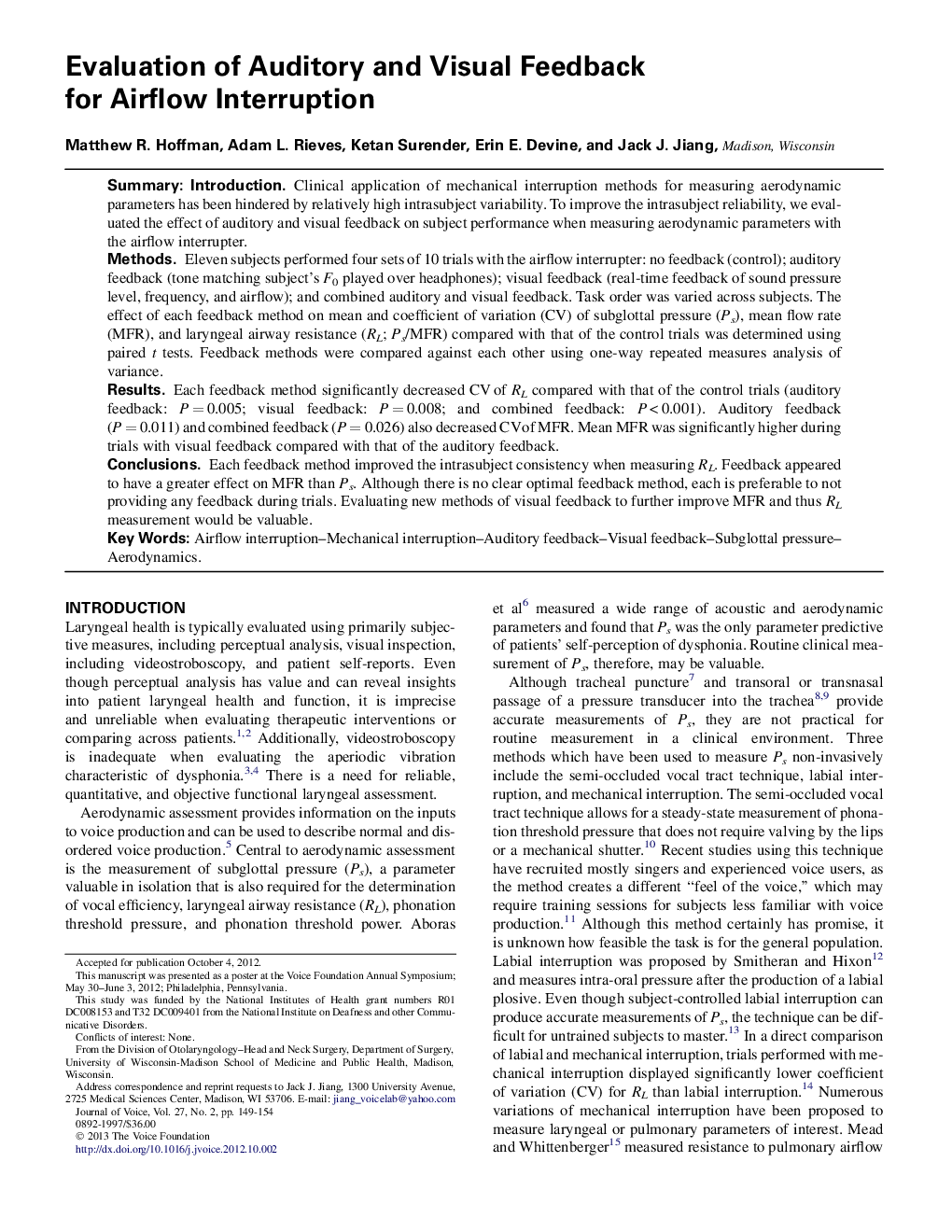| کد مقاله | کد نشریه | سال انتشار | مقاله انگلیسی | نسخه تمام متن |
|---|---|---|---|---|
| 1101435 | 953568 | 2013 | 6 صفحه PDF | دانلود رایگان |

SummaryIntroductionClinical application of mechanical interruption methods for measuring aerodynamic parameters has been hindered by relatively high intrasubject variability. To improve the intrasubject reliability, we evaluated the effect of auditory and visual feedback on subject performance when measuring aerodynamic parameters with the airflow interrupter.MethodsEleven subjects performed four sets of 10 trials with the airflow interrupter: no feedback (control); auditory feedback (tone matching subject's F0 played over headphones); visual feedback (real-time feedback of sound pressure level, frequency, and airflow); and combined auditory and visual feedback. Task order was varied across subjects. The effect of each feedback method on mean and coefficient of variation (CV) of subglottal pressure (Ps), mean flow rate (MFR), and laryngeal airway resistance (RL; Ps/MFR) compared with that of the control trials was determined using paired t tests. Feedback methods were compared against each other using one-way repeated measures analysis of variance.ResultsEach feedback method significantly decreased CV of RL compared with that of the control trials (auditory feedback: P = 0.005; visual feedback: P = 0.008; and combined feedback: P < 0.001). Auditory feedback (P = 0.011) and combined feedback (P = 0.026) also decreased CV of MFR. Mean MFR was significantly higher during trials with visual feedback compared with that of the auditory feedback.ConclusionsEach feedback method improved the intrasubject consistency when measuring RL. Feedback appeared to have a greater effect on MFR than Ps. Although there is no clear optimal feedback method, each is preferable to not providing any feedback during trials. Evaluating new methods of visual feedback to further improve MFR and thus RL measurement would be valuable.
Journal: Journal of Voice - Volume 27, Issue 2, March 2013, Pages 149–154